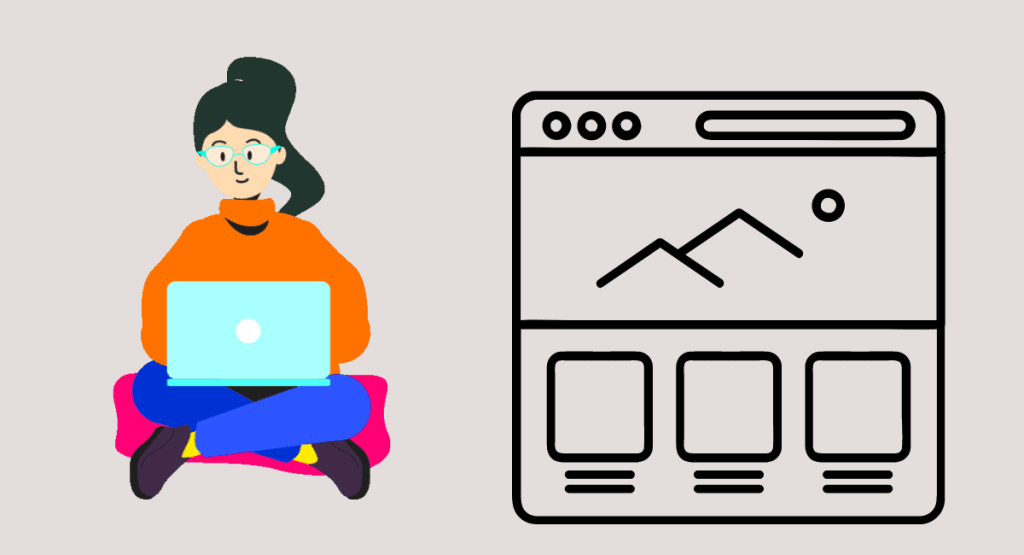Are you searching for some best blog layout practices? Seeing examples of incredible blog designs might motivate you to build your own masterpiece. With this list of the top blog designs, we’ll be able to assist you today.
Blogging is a kind of storytelling. A well-designed blog becomes an extension of the stories you tell. A straightforward, austere technology blog may convey seriousness and clarity. Fun and relatability are suggested by a colorful, cartoonish parenting blog.
The ability of a design to tell a narrative should never conceal or obstruct the reader’s ability to read the blog. A smart blog design communicates a narrative while still being conventional and pleasant to read (don’t create anything so odd that people become confused!).
This is a selection of blogs that I feel are solid examples of outstanding blog design across a variety of businesses.
Those who have already begun blogging most likely picked a WordPress theme and let the basic structure of that theme define the layout of their site… which is acceptable.
Choosing a fantastic theme is one method to ensure that your blog looks excellent, but it shouldn’t be the only consideration when deciding on the layout of your site.
With the large variety of choices available today, deciding on the ideal blog style and design functionality may be a challenging task. We’ve compiled a list of a dozen of the greatest blog layouts (along with best practices) to help you make judgments about blog designs, templates, fonts, color schemes, and more.
Contents
What Makes a Great Blog Design?
Let’s go through some basic blog design guidelines before we get started.
You might believe that a great blog design needs plenty of flashy animations, complex typography, including several fascinating widgets, but this isn’t the case.
If your blog design is overly busy, it may cause readers to become distracted, defeating the most vital aspect of a successful blog design: readability.
Visitors must be able to read your content without difficulty, or they will not return.
So, here are a few characteristics of an excellent blog layout and design that prioritizes readability:
- White Space: White space is an empty space between and surrounding objects on a page that isn’t necessarily white. Use white space in your blog design to bring attention to key sections, such as your content.
- Navigation: Your blog should include a navigation menu so that readers may simply make their way around and to the pages or articles that they’re looking for.
- Blog Header: When readers arrive at your blog, the header area at the top of the page is generally the first thing they see. It establishes the tone of your site and attracts people. A high-quality image, your logo, and a brief description of your blog’s topic should all be included.
- Blog Cards: Using cards or thumbnails to display your blog posts allows you to manage a large amount of material for your readers. A featured picture, title, date, author name, blog excerpt, category, and “Read More” button are all common features of blog thumbnails.
- Social Sharing: Including social sharing functionality in your blog allows users to easily share your material around the internet. A plugin such as Shared Counts makes it simple to add social sharing icons to your site.
These are only a few recommended practices to remember, but they should be plenty to get you started.
Also Read: How to start a blog?
8 Best Blog Layout Examples
Here is the list of the greatest blog layouts (along with best practices) to help you make judgments about blog designs, templates, fonts, color schemes, and more.
-
Sincerely Jules
With a beautiful design, Sincerely Jules is a renowned fashion and lifestyle site. Her blog’s site has a full-width header image of the most recent blog post, as well as a link to read the content.
In the top-left corner, there’s a navigation menu, and connections to her social media platforms are shown vertically on the right side.
More of her recent blog posts are shown in huge, eye-catching thumbnails as you scroll down the page.
Jules has included her Instagram feed at the bottom of the page.
This can assist you in the following ways:
- Keep your blog updated with new stuff on a regular basis.
- Boost participation.
- Increase the number of people who follow you on social media.
-
A Cup of Jo
A Cup of Jo is another basic blog design that focuses only on content, which includes cuisine, design, travel, parenthood, and other themes.
The navigation bar at the top of the page, similar to the previous example, divides the material into easy-to-find categories, and the most recent entries are presented as you scroll down the page.
This blog’s design also incorporates the following elements:
- An opt-in form for email.
- The icon in social media.
- Blog posts with a lot of traffic.
- Posts that are related.
-
TED Blog
The TED Blog has a polished look and feels that’s ideal for news blogs and webpages.
The top-of-the-page full-width banner graphic promotes the most recent content. A call-to-action button appears beneath the blog title and description to urge readers to read the content.
Visitors can navigate through all of the blog’s most recent articles beneath that section.
Visitors may also sort the articles on the site by newest, most popular, or other TED categories.
-
Copyblogger
The Copyblogger site features a clean, minimalist style with plenty of white space. This blog design demonstrates that you don’t need a lot of things to make a page effective or intriguing. Instead, you can allow your fantastic content to do the talking.
The thumbnails of the most recent articles are displayed on this page. Visitors may read the entire post by just clicking on the thumbnail.
Copyblogger provides a lead magnet at the foot of the page to get readers to join their email marketing list.
-
TechCrunch
The minimalist blog design of TechCrunch is ideal for readers who want to jump directly into the newest tech news.
At the top of the page, there are highlighted blog entries. The most recent posts are then shown in a vertical list.
On the left-hand side, there’s a navigation panel and a search bar to assist visitors to locate what they’re looking for quickly.
-
Jess Ann Kirby
This lovely, clean-looking lifestyle, fashion, and travel site is owned by Jess Ann Kirby.
But it’s the way Jess promotes her affiliate items that truly stand out.
Questions from her readers are featured in the “Reader Requests” area at the top of the website, such as: Do you have any natural deodorant recommendations?
When you click on that question, you’ll be sent to a page where she offers relevant items via affiliate links.
She also has a “Reader Favorites” area where she displays affiliate items in a carousel.
-
The Crafty Needle
The Crafty Needle’s blog is rather simple in design. To make it more entertaining, they employ a lot of colors and eye-catching pictures.
The full-width website header graphic informs readers about the content of the blog.
As you scroll down, you’ll see blog entries organized into three categories: sewing, embroidery, and quilting.
They also feature a “Start Here” area where complete novices may get the information that is most appropriate for them.
Final Verdict
How will you organize the design of your own blog now that we’ve covered all of the most important blog layouts best practices and evaluated a tonne of blog layout examples?
It’s now up to you to implement everything you’ve learned in your own blog design and overall site design.
- What are your plans for adapting these blog layout ideas to meet your vision?
- What do you think of the blog layout samples you’ve seen so far (and why)?
- Have you discovered any blog layout problems that you’re ready to correct?
Remember, no one should ever make a carbon copy of someone else’s blog layout. Plagiarism is a term used to describe the act of copying someone else’s work. However, the blog layouts you’ve seen in this article may still provide a lot of inspiration because they’ve been purposefully created to attract (and maintain) visitors over time.
Also, keep in mind that the blog layouts you’ve seen here follow tried-and-true best practices for lowering your bounce rate and encouraging visitors to return to your site for more.


